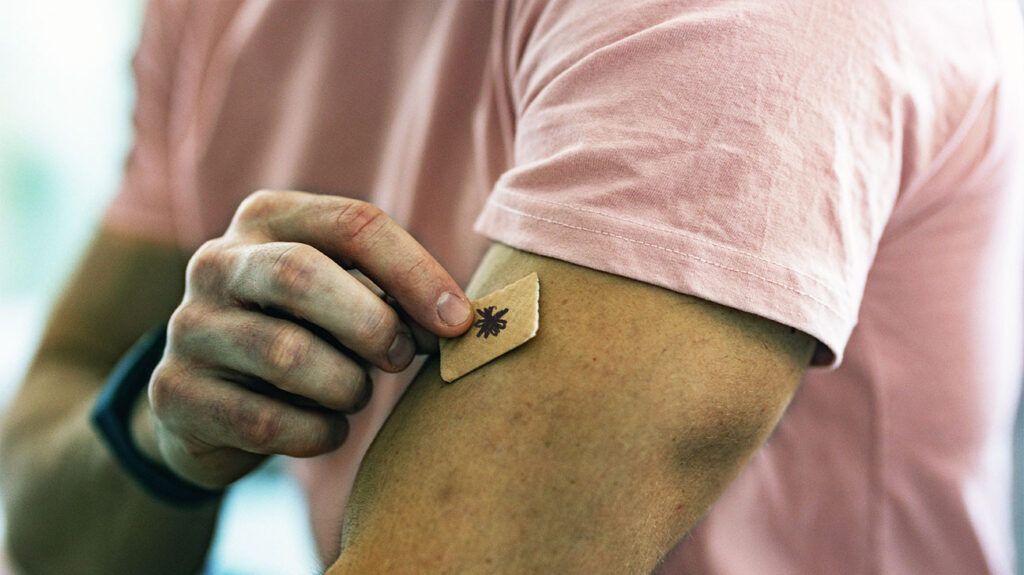It typically takes 2 hours for half the nicotine to leave the body after ingesting it. After quitting smoking, a person may experience significant withdrawal symptoms from a few days to weeks or longer.
Nicotine is the addictive substance in tobacco, cigarettes, and vapes, also called e-cigarettes.
When people use tobacco products, some of the nicotine stays in their system after they quit smoking. Medical tests can detect nicotine in people’s urine, blood, saliva, hair, and nails.

Nicotine has a half-life of around
This short half-life means that the immediate effects of nicotine go away quickly, so people soon feel like they need another dose.
When nicotine enters the body, it is broken down into more than 20 different substances, including cotinine, anabasine, and nornicotine. People eventually excrete these byproducts in their urine.
Doctors can use nicotine tests to measure levels of nicotine and its byproducts in a person’s:
- urine
- blood
- saliva
- hair
- nails
When a doctor is testing for tobacco use or exposure to nicotine, they will likely test for cotinine. This is because it stays in the body for longer.
It can take more than 2 weeks for a person’s blood to reach the same cotinine levels as someone who does not use tobacco. It takes several more weeks for cotinine levels in urine to become very low.
Traces of nicotine may stay in the hair for longer, though people are rarely asked to do a hair test unless they are taking part in research.
The more someone smokes, and the higher the frequency of smoking, the longer nicotine takes to leave the body.
The severity and timeline of physical withdrawal symptoms vary depending on how much an individual smokes.
Symptoms of nicotine withdrawal are at their worst during the
The physical and psychological effects of nicotine withdrawal include:
- anxiety
- stress
- irritability
- trouble sleeping
- depression
- restlessness
- difficulty focusing
- increased appetite
Once the physical symptoms are gone and all nicotine has left the body, a person may still feel a psychological desire to smoke. Often, this is because they are used to the habit of smoking.
The desire for nicotine may be worse in triggering situations. Examples of these may include times of stress or when having drinks with friends. Over time, these triggers become much less powerful.
Learn more about the timeline after quitting smoking.
Nicotine tests can detect nicotine in the body when people have used an electronic cigarette, also called a vape.
Vaping is a relatively recent invention, so little research has looked into its short- and long-term effects. Researchers do not yet know whether the body processes nicotine differently from cigarettes or vapes.
The content of nicotine in e-cigarettes is variable. For example, the
Additionally, there is
- a range from low to high
- percentage of nicotine per volume
- concentration
- amount of nicotine per amount of e-liquid
The following factors may determine how much nicotine people ingest when using a vape or e-cigarette:
- amount of nicotine in the vaping solution
- efficiency with which vaping devices deliver nicotine
- differences in how people use vaping devices, including frequency and length of inhalation
According to the
However, for people who currently smoke, switching completely to e-cigarettes may help reduce the exposure to harmful chemicals.
The FDA has approved 34 tobacco- and menthol-flavored e-cigarette products and devices.
Learn more about smoking and vaping.
Researchers still do not know the safety and long-term health effects of using e-cigarettes and other vaping products. In September 2019, federal and state health authorities
Testing people for nicotine is sometimes done for insurance or job-related reasons. Nicotine tests measure a person’s exposure to nicotine and, if they have been exposed, by how much. These tests look for traces of nicotine and other related substances, such as cotinine.
Cotinine is a more reliable measure of tobacco use because it stays in the body for much longer. The half-life of nicotine is around 2 hours, while the half-life of cotinine is 15 to 20 hours.
Testing can use the following different parts of the body for tissue samples:
- urine
- saliva
- blood
- hair
- nails
There is no sure way to flush the body of nicotine quickly, but people may try maintaining a healthy lifestyle so that their body works efficiently.
The following methods may help clear nicotine from the body:
- drinking plenty of water to flush waste products from the kidneys and liver
- exercising to get the blood moving, boost circulation, and release waste products through sweat
- eating a balanced diet rich in antioxidants to help the body repair itself
Some commercial products and herbal remedies claim to speed up the body’s ability to clear nicotine from the system, but regulators have not usually tested them scientifically.
The rate at which nicotine leaves the system is affected by:
- how much nicotine a person uses and how often
- how long a person has been using tobacco products
- the person’s overall health and age
It is not yet clear whether people who vape clear nicotine from their systems more rapidly than people who smoke traditional cigarettes.


